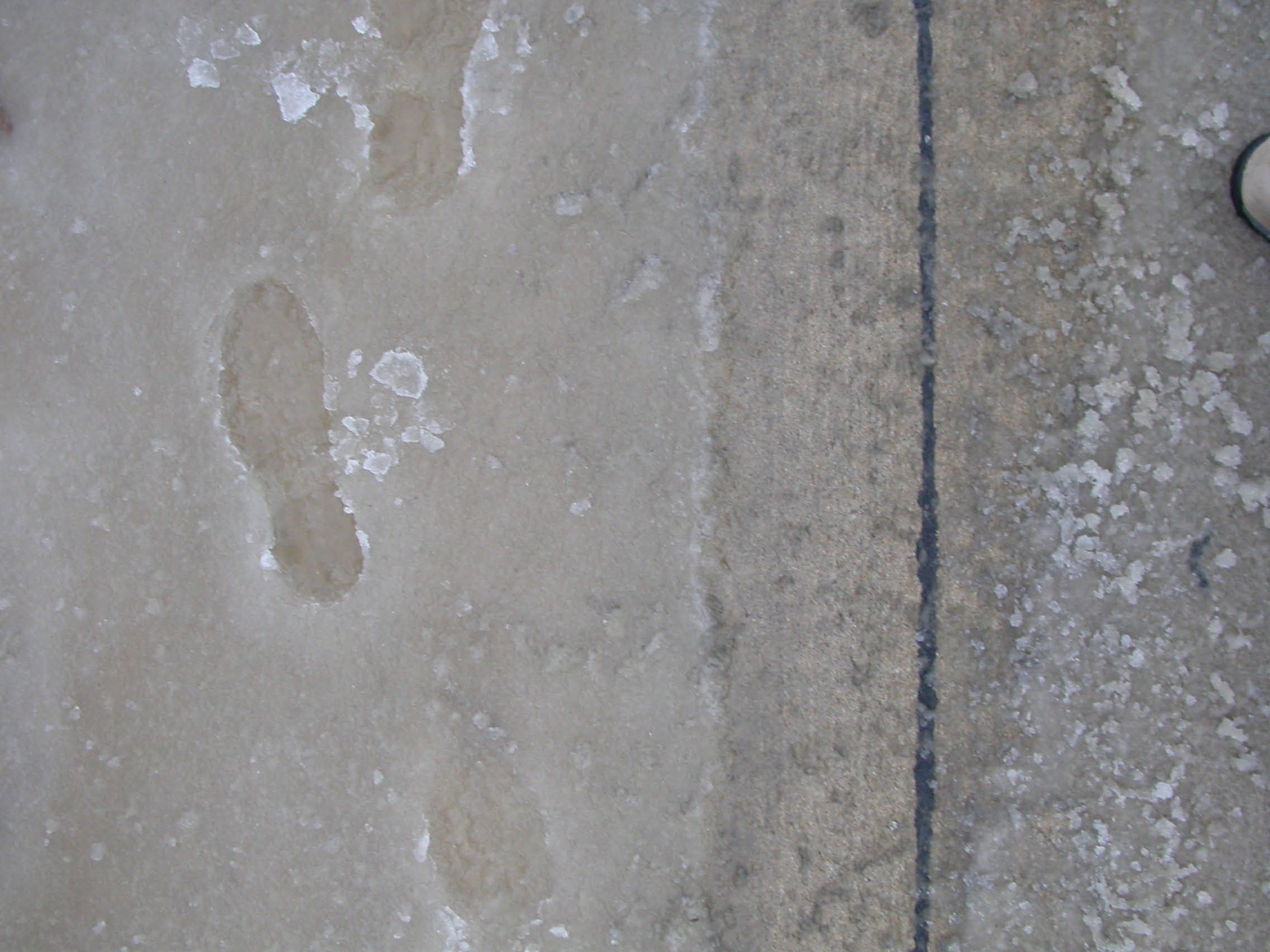Mostly written 21 February 2008, from Columbia, Missouri, USA
The temperature for the last few days has been below -5°C (about 20°F). The wind on my daily walks is cold but invigorating.
So, I was surprised yesterday when we drove over a puddle and water splashed on our windshield. It froze instantly. Given the air temperature, this is not surprising. The car thermometer read 17°F (-8°C).
How could there be water in a puddle after three days of subfreezing temperatures?
I decided to investigate on this morning’s walk, and found out a few interesting facts. Figures 1 and 2 show the puddle up close and from a distance. My footprints and the tire tracks in Figure 1 indicate that the puddle was “slushy.” It was easy to make footprints in it. So it is not surprising that passing cars were getting splashed when they drove over the puddle. The second picture shows the puddle with a fire hydrant on the north side of the road (and to the east of the puddle). A line of fire hydrants lies to the north of this road; so I conclude there is a pipe connecting them.

Figure 1. Slushy puddle with footprints (left) and tire track (right). At the time of the picture, the air temperature at this location had been below freezing for several days.
Figure 2. Picture of puddle taken later in the day, after more frozen precipitation (ice pellets) covered the rest of the road with white. Note the red fire hydrant. The puddle is at a low point in the road, and the ground slopes downward toward the puddle from the north.
So, I came away with two hypotheses.
First hypothesis. The puddle is being fed from extremely wet soil. There has been a lot of precipitation around here recently. I knew this because I had been monitoring the weather the week before I got here. I am guessing that the soil is saturated and the water table is quite high.
So, the water could just be flowing downhill, perhaps atop the bedrock, which comes quite close to the surface. Or, the puddle could be fed by an underground spring. There are many springs in this part of the country. The bedrock, close to the surface, is Burlington limestone, which has multiple cracks and caves – paths for the water to follow.
Second hypothesis. The pipe connecting the fire hydrants just happened to have been broken here.
These two hypotheses are based on my impression that the puddle wasn’t there before 20 February. In either case, as we shall see, salt added on the road could have kept the water from freezing once it reached the surface.
I talked to my nephew, who was around when the road was built, and he supported the first hypothesis, because they found a lot of springs when they built the road. The springs are fairly active: my sister-in-law said that swimmers in a lake to the south of the road frequently noticed cool spots, where the cool spring water was feeding the lake. The springs also suggest that the water table is normally high. So, after an unusually wet period, it would be plausible that the water is running down the hillside beneath the surface.
Next time: Why wouldn’t the water running down the hillside beneath the surface be frozen?
